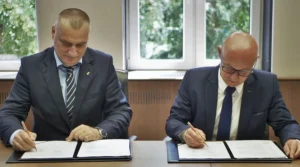What goes on in Poland on the 22nd of February.
A decision on the new LNG terminal may be made this year
– The decision on the second gas pipeline may be made this year – said the PGNiG vice-president of trade affairs, Maciej Woźniak.
During the scientific seminar „Liquefied gas (LNG) in communes – an effective raw material in the fight against smog?” Woźniak said that the construction of a floating LNG terminal near Gdańsk is being considered: – Because of growing demand for LNG and the relatively quick time of expansion of such objects, the decision construction of a floating LNG terminal in the Gulf of Gdańsk may be undertaken later this year – he said.
Asked by a journalist of BiznesAlert.pl, Woźniak said that PGNiG has contracted 10 bcm of LNG after regasification, which exceeds the capacity of the terminal in Świnoujście: – We have import restrictions, hence the idea of a vessel. We are preparing, we have recognized the market well, we are in advanced talks with American and Norwegian companies. It may take 16-20 months from a decision to start of such an entity. This type of unit should have 3,5-4 billion cubic meters of regasification capacity – said the vice president of PGNiG.
– The FSRU liquefaction unit that PGNiG would have ordered moored in the waters of the Gulf of Gdansk would be able to supply gas through gas pipelines on the bottom of the bay to gas storage facilities in salt caverns in Kossakowo north of Gdynia, as well as the second branch of the gas pipeline to Gdańsk, thus enabling gas to central Poland, also circular gas flow in the Three Seas area. The PGNIG Group is ready to carry out this project – he assured.
– We contracted over 10 billion cubic meters after regasification, but on the table we have attractive offers for the purchase of another three billion cubic meters of gas. Hence, the terminal in Świnoujście with a regasification capacity of 10 billion – as minister Naimski recalled – is not enough to bring all our contracted supplies every year. At the same time, such an FSRU unit could also be used by PGNiG to transport LNG gas from, for example, US FOB contracts – he added.








